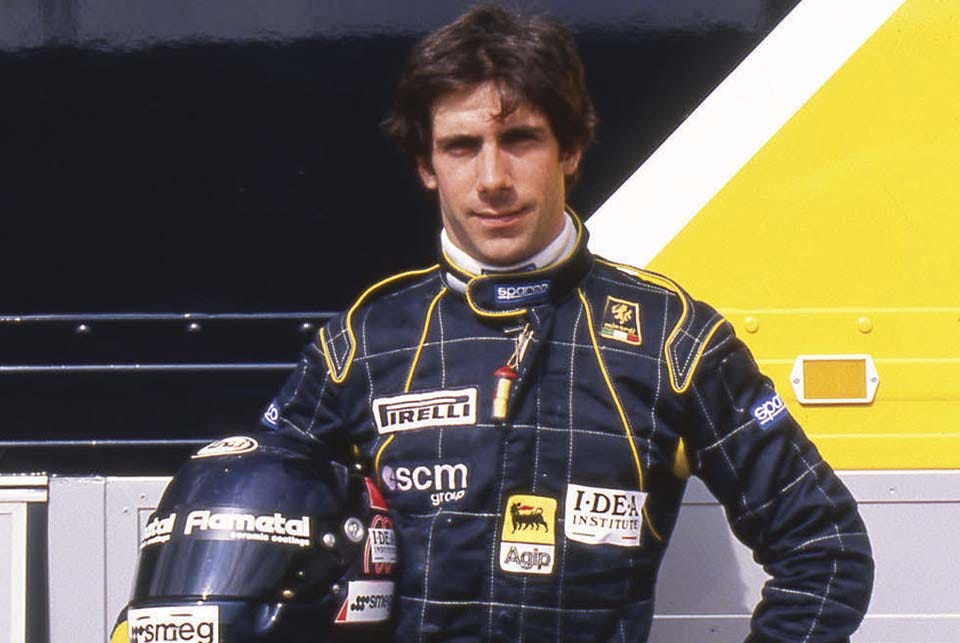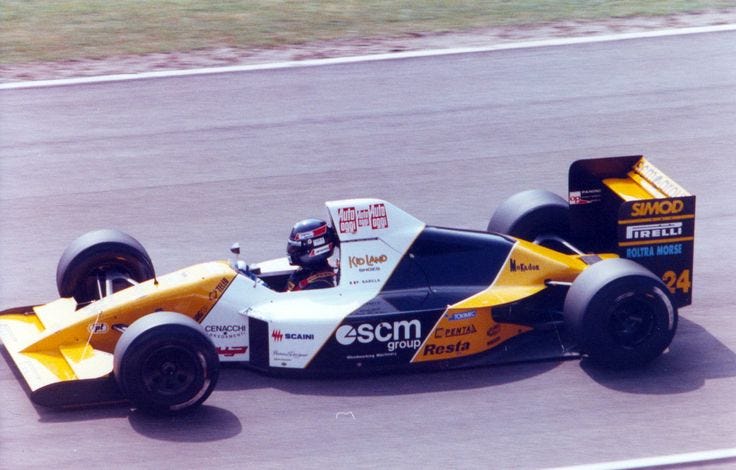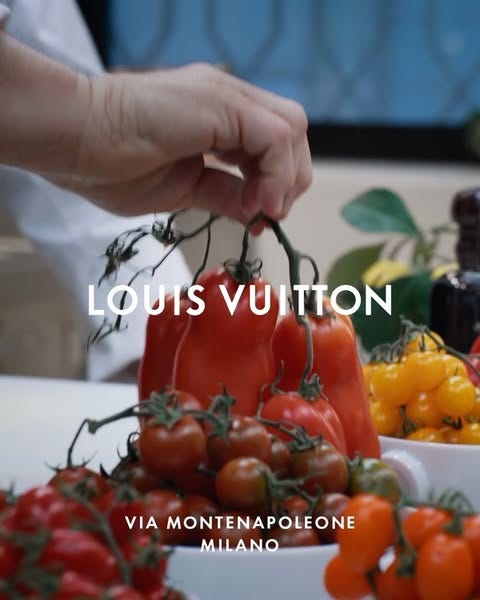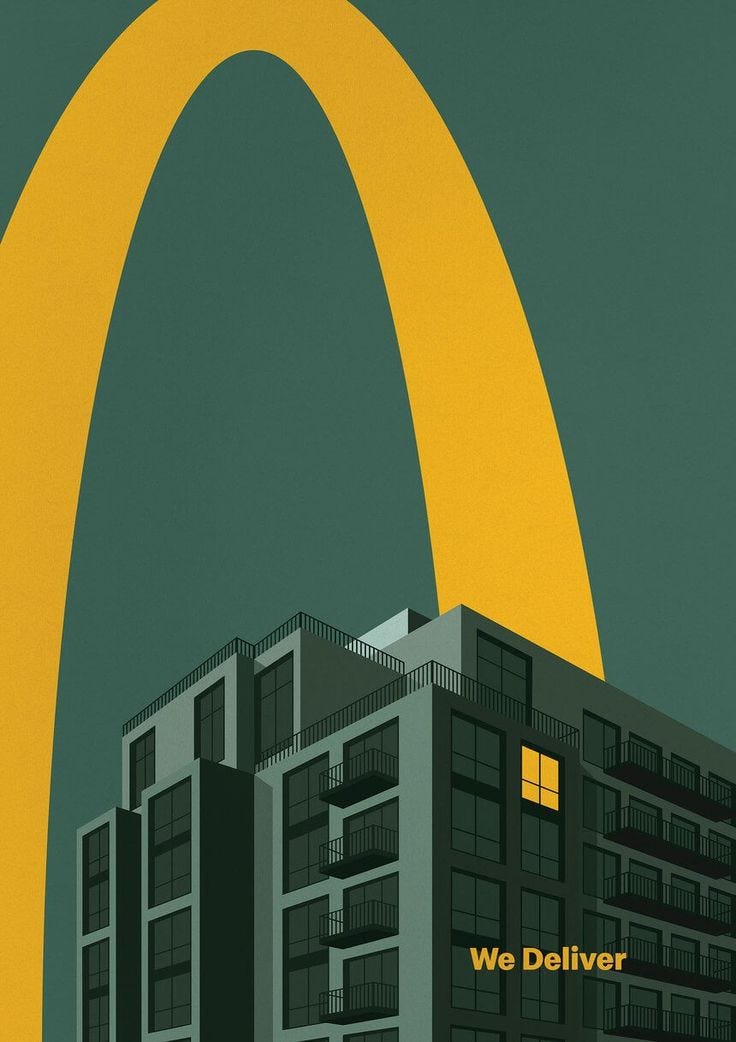How I’d advertise Barilla in F1
An in-depth exploration of the new Barilla x F1 partnership, Paolo Barilla’s connection to the sport, and my perspective on enhancing the brand’s communication strategy.
First of all, my apologies for missing last week's newsletter. We've just finished one of the best - if not the most interesting - weeks of the year in Milan: Milano Design Week, and on top of that I have been working full-time on the launch of a new fashion client at my corporate job.
For those who don’t know, Milano Design Week is basically like Fashion Week, but focused on homeware and functional design. Every brand—from fashion to tech to, honestly, anything you can think of—launches its own capsule or product, often in collaboration with Italian names. If you're planning a trip to Milan, forget about Fashion Week (where most of the events require an invitation) and come during Design Week, when the majority of the events are in the city centre and open to everyone. Just a heads-up: this year it was packed and people went crazy for the free gadgets - so plan your visits wisely.
Highsnobiety (who had their own very cool installation) made a very good compilation in this post with the top-tier exhibits this year:
Anyway, it’s been a long week, and today I want to talk about a new partnership in Formula 1—one that taps straight into the culture I now live in and consume every day. F1 has an official pasta brand now, and yes, we have to talk about it. So far, we’ve mostly seen drinks—energy or alcoholic—taking over the sponsorship space, alongside the usual protein and performance supplements. That’s why I’m genuinely curious to see what this 100% foodie partnership can bring to the sport.
What’s the partnership about?
If you’re outside Italy (or Europe), you might not know that Barilla is the world’s largest pasta producer. From spaghetti, to penne to every kind of sugo (that’s how we call pasta sauce in Italy), Barilla basically gives you everything you need for the perfect pasta al pomodoro—or whatever pasta dish you're into. Now Barilla has joined Formula 1 as its “official pasta partner”—which makes total sense to me. Pasta is the food you associate with sports, performance, and more than anything, with Italy—a country that plays a massive role in F1. According to the press release, this partnership aims to unite two iconic brands sharing a passion for excellence, heritage, precision and culture. All of this is being translated into:
Brand Visibility: As we’ve seen with Louis Vuitton (and the whole LVMH portfolio), Formula 1 is the perfect stage for showcasing a brand. Barilla will get signage space trackside, set up exclusive “Pasta Bars” in the Paddock Club and general paddock areas, and offer fan experiences during race weekends. On top of that, there’ll be digital activations and consumer promos. It’s the ideal setting, because—as I’ve said in previous issues—the future of branding is omnichannel.
Shared Values & Synergies. Both sides have underlined how the partnership is rooted in shared values: the precision of engineering and the craft of pasta-making both demand attention to detail, a constant pursuit of excellence, and a deep sense of tradition. These are classic Italian values—and core to Barilla. During the launch events in Bahrain and Japan, F1 CEO Stefano Domenicali said the collaboration brings “an elevated taste to the emotions of F1” while Paolo Barilla compared building a lightning-fast F1 car to the craftsmanship behind pasta.
Marketing Impact: Even though Barilla is the world’s biggest pasta brand, pasta isn’t part of daily culture everywhere and funny enough, here in Italy—where we eat it every day—people are quite picky so Barilla often ends up seen as the “standard” option in a sea of premium artisanal producers. This F1 partnership gives Barilla a chance to reclaim that prestige on the global stage and it helps reinforce its Italian heritage to new audiences and boosts the fan experience by blending sport with culinary culture—creating a moment of connection that strengthens both community and brand.
Why does it make total sense?
There’s a hidden gem in this partnership that only a few people know about: Paolo Barilla, CEO of Barilla, was once a Formula 1 driver. He began karting in 1975 and won the Italian 100cc championship the following year. That early success launched him into single-seaters, eventually leading to his F1 debut in 1989 with the Minardi team. He initially stepped in as a substitute for Pierluigi Martini, but the opportunity soon turned into a full-time seat in 1990, when Paolo officially joined Minardi and took part in 15 Grands Prix. However, he struggled to keep pace with his teammates, never scoring any points and with a best finish of 11th and he was later replaced by Gianni Morbidelli.
After his racing chapter, Paolo shifted gears and focused on the family business. In 1994, he became Deputy Chairman of the Barilla Group—a role he still holds today. This position has allowed him to blend his lifelong passion for racing with his business expertise, especially now with a partnership that brings him back to Formula 1 in a completely different way.
How I think this partnership could reach its full potential
So far, what I've seen in terms of communication is decent, but it's not quite what I would have done if I had the opportunity to really connect with the younger audience that Formula 1 is now attracting. Barilla strongly promotes the concept of "traditional relationships", especially the familiar ones around food - something deeply rooted in Italian culture. In 2025, however, I don't think this approach fully resonates, given the different perspectives we now have on love, relationships, racial and cultural representation, and evolving family structures that should no longer be considered "new" or “modern” but normal.
I understand their point of sharing Barilla’s history as a brand, but I would have approached it differently, especially considering that Paolo himself aims to surprise new generations and expand into new markets like Asia, where street food culture is thriving.
Instead, I would have split the communication strategy into two branches, combined with experiential marketing: one more 'gourmet' and the other more 'street', to appeal to two different audiences simultaneously. The first would target the paddock crowd, more affluent, polished and sophisticated, while the second would focus on the fans in the grandstands. And of course I would have taken the opportunity to use new, fun concept graphics, especially to attract the younger audience.
First, a tailored gourmet approach
The luxury of the paddock could help position Barilla's "Collezione" gourmet line at the forefront of the minds of high-end consumers, especially in countries that are still discovering pasta. I would call the project "Buon Appetito" and replace the actual food truck with a more elegant pop-up with changing pasta recipes, prepared by renowned Italian chefs at each race. This would elevate the brand while showcasing Italian culinary culture, providing a perfect gourmet experience for those trying it for the first time.
A similar and excellent example of merging food culture with luxury is Louis Vuitton’s recent project in Milan, where they collaborated with one of Italy’s most famous chefs, Enrico Cerea Chef of the 3-Michelin Starts, DaVittorio, renowned for his Paccheri al Poodoro. This collaboration resulted in the DaVittorio Louis Vuitton Café, located on Milan's prestigious Via Montenapoleone. The project’s core concept is “luxury snacking,” with Louis Vuitton contributing to the exquisite interior design of the café.
Second, a street food strategy with a Gen-Z tone
On the other hand, Barilla should target younger audiences, especially overseas. For this group, I’d suggest a much more Gen Z-oriented approach, tying it to street food culture and fast food trends. Brands like McDonald’s have nailed cool communication strategies that make junk food seem trendy and Barilla has an advantage here: pasta is already cool, and it’s far from being junk.
I would create a “Drive-Through” concept, where people can grab pasta at the fan zones. If you've ever been to a Grand Prix in General Admission or on the grandstands, you'll know how hard it can be to find decent food. At last year's Monza GP, my watch told me I had walked 22km in one day, and the food trucks rarely offer good food, and the price is not right for the quality, so a pasta dish tailored to each Grand Prix (and its weather) would be a nice treat. The packaging would be personalised for each race, and when you order, Barilla would give you the recipe for the dish you've just eaten, so you can recreate it at home, thus encouraging customers to buy their Barilla pasta pack in their supermarkets.
In keeping with the original concept of sharing a meal around the family table, I'd change it to a more contemporary concept of sharing a passion for racing and sport with friends over good food. Fans would be able to take instant Polaroid-style photos while eating their pasta with friends, which they could take home and share on social media. This would also provide some very good fan content for the Barilla social team.
In terms of graphic communication, I'd aim to adapt a new branding to use a very friendly, direct tone, linking the concept of carbohydrates with speed, performance and Formula 1. I'd also use the fan moment we're seeing with Carlos and Alex at Williams, whose fanbase calls itself "Carbonara", to create a fun and engaging social media content campaign, generating great assets while riding the fan wave.
In this post, I’ve included some graphic concepts and some ideas for how I would execute the campaign:
Wow, now I’m pretty hungry, so I’m off to make a nice pasta al pomodoro with burrata. See you next week!
Ciaooooo
Alba












Loved this post Alba & your excellent ideas for some of the partnership activations! Hope you don't mind if I share a link to this post in my F1 sponsor round-up post later this week when talking about the Barilla partnership!